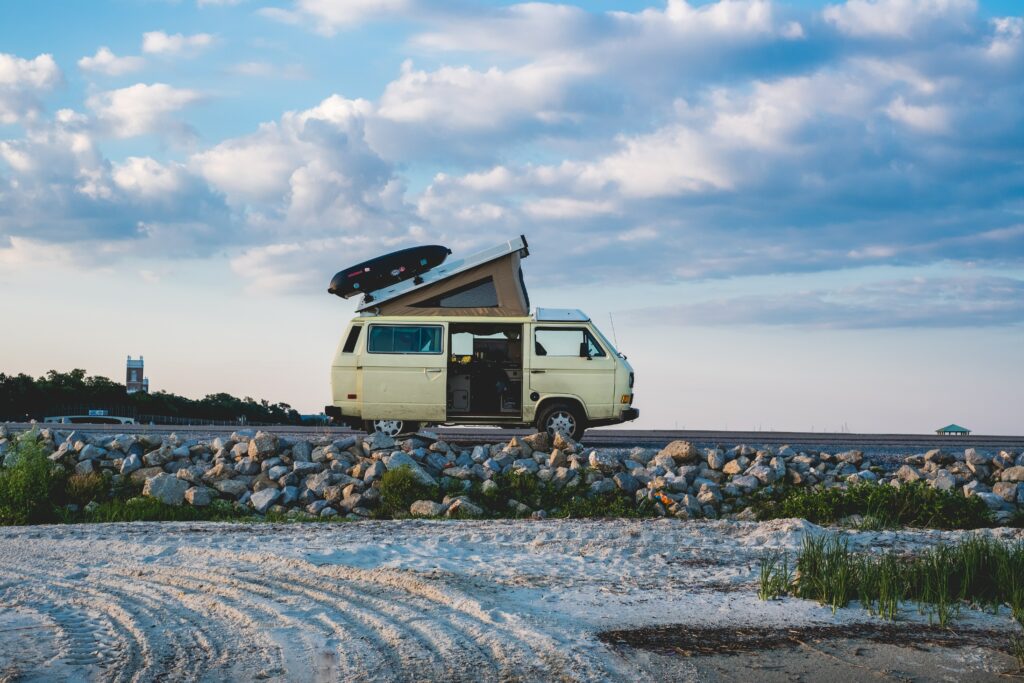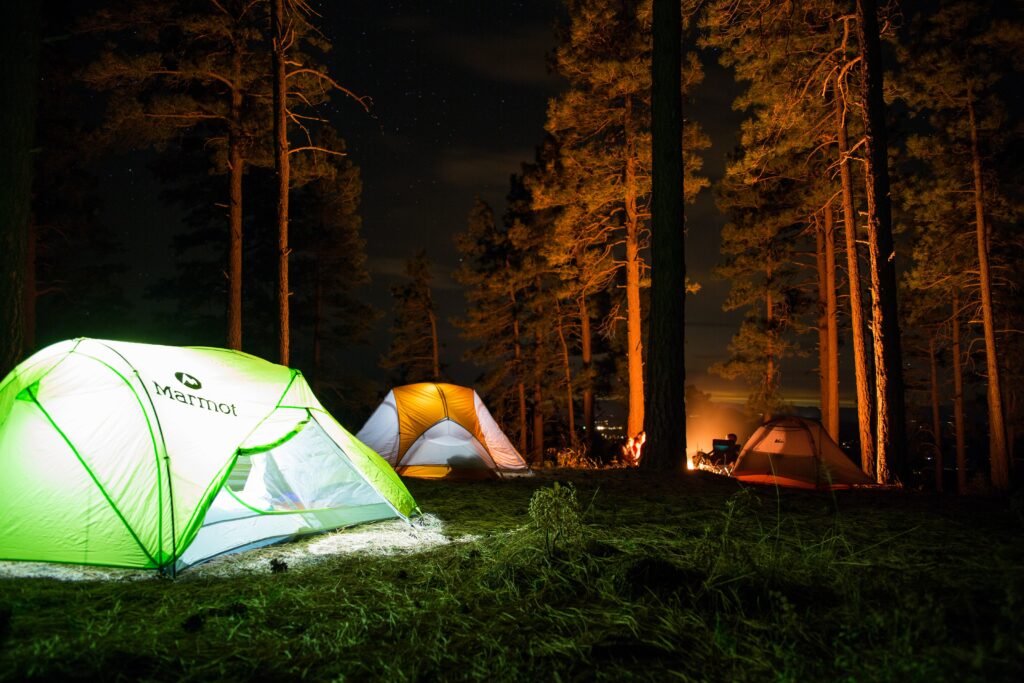Caravanning and RVing are both iconic forms of travel, offering the promise of freedom, flexibility, and the open road. Who hasn’t spent a few minutes daydreaming about leaving it all behind, getting a van, and driving off to distant lands and unknown adventures?
For those who do decide to follow through with this dream, money can quickly become a problem. In this short guide, we’ll go over how to keep costs low when carrying out your RV travel plans.
Looking for trusted travel guides for your next adventure? Turn to Wild Bum for curated guides from all over the world!

The Vehicle
First things first: you need a van. Choosing and buying an RV can seem overwhelming, so first you need to get familiar with the various options. This guide by RoverPass explains everything in detail, but we have summarized the key figures.
The priciest option is a motorhome – a self-contained vehicle and living solution. There are three classes of a motorhome:
- Class A – Luxurious, spacious, and high-end ($50,000 to $100,000)
- Class B – Smaller but more affordable and maneuverable ($40,000 to $100,000)
- Class C – Somewhere in between classes A and B ($60,000 to $100,000)
Travel trailers, as opposed to motorhomes, are attached to the back of a vehicle. Since they don’t have a motor, they tend to be a cheaper option ($11,000 – $30,000). However, you need a truck or SUV to tow them.
There are other considerations you’ll need to factor into your budget as well, such as maintenance, tires, and a cover. Do some research online for recommendations and tips for all your RV needs.
There are various ways you can save money on an RV. One option is to buy it second-hand. Another is to watch out for sales at key times of the year. However, it’s important not to skimp out on your RV. You are trusting a vehicle to carry you and your family across the country – and even abroad – and to also be your home. You need something reliable, or you may end up regretting it. Always check reviews of the model before buying.

Campsites
So, you have your RV and you’re on your way. Your next choice will be which campsites to visit during your travels. Costs vary widely depending on a site’s amenities, with some campsites offering luxury conveniences and some being very bare-bones. It costs, on average, around $29 a night to stay in an RV campsite.
If you’re feeling adventurous, there are many places where you can camp on a budget in the wilderness. Wild Bum has some useful advice on finding these spots, along with tips for making your camping trip an incredible experience.
If you want to keep costs low while still being comfortable, just balance things out. Stay in simple campsites most of the time, then treat yourself to a nice campsite with a hot tub once in a while. Also, remember that if you have invested in a lovely luxury motorhome, the amenities of an expensive campsite may be redundant.

Additional Costs
In a breakdown of an RVing family’s budget, the vehicle and campsite costs make up 15 percent and 13 percent of the total, respectively. The only bigger expense, at 26 percent, is groceries. Additional, hidden costs include RV-specific things like insurance, gas, and maintenance as well as everyday costs like laundry and entertainment.
The everyday costs are ultimately up to you and how savvy you can be. The RV-specific costs will depend on the vehicle you chose, how well you take care of it, and the amount of research you put into your insurance costs. This “Ultimate Guide” to RV insurance is a great place to start.
The cost of an RV puts many people off this wonderful form of travel. When you combine a vehicle with campsite fees, maintenance, repairs, gas, and insurance, RV-ing can start to look like a luxury. However, as long as you plan ahead and do your research, you can easily keep your dream RV vacation on a budget.






